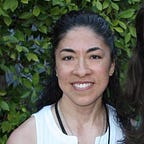How I Achieve Photorealism
My #1 Priority
Before we get into how I achieve photorealism, let’s define what photorealism is. Photorealism started off as a movement in the late 1960’s, primarily in New York and California. Photographs were used as a visual reference. This allowed artists to capture everything about the subject matter, including imperfections. The goal being a finished piece that is so highly detailed that a viewer would think it was a photograph.
These days photorealism still encompasses work that is meticulous in detail and incredibly realistic. Artists use a wide variety of mediums and methods vary from artist to artist. And the ultimate goal is still to produce a finished work that looks as close to a photo as possible.
Personally, I always use a photo or reference of some sort. But sometimes, a client’s photo of their pet awkwardly chops off part of the animal’s body and I end up having to ad-lib a bit.
The method that I use to achieve photorealism is probably pretty common. I start off with a very light, basic line drawing. The line drawing stage looks closer to an image you’d see in a coloring book. Just the outline with little to no details other than the outline. Granted, mine has a little more detail, but you can see what I mean in the alligator drawings below.
To achieve photorealism, good rendering skills are needed. This is what really makes a drawing or painting look realistic. In a nutshell, rendering involves adding color, value (shading), and…
